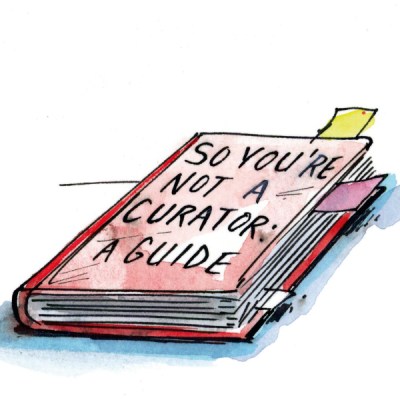Today museums focus as much on learning and public engagement as exhibition making and collecting. To what extent should museums be useful or agents of social change?
Alistair Hudson
I am grateful to my predecessors for making Middlesbrough Institute of Modern Art (mima) what it is: an institute. It could have been a museum or an art gallery and, for many, it performs those functions well, having both a growing significant and historic collection of art and crafts, and galleries that have staged exhibitions of the highest quality.
An institute has for me a deeper resonance, which encompasses, predates, and goes beyond these functions, as a place of education and an instigator of production that operates within the communities it serves. This sits within a longer history that goes back to the year 1800 with the formation of the first Mechanics’ Institutes, initiated by George Birkbeck, to teach the mechanical arts (mechanical referring specifically to the arts of the hand) to the emerging working classes, as Britain moved from an agrarian to industrial economy.
The Institute movement spread rapidly throughout the Anglophone world, offering practical education in sciences and arts for those previously prohibited from pursuing learning and self-improvement. It is testament to their success that by 1850 there were 700 in the UK and similar numbers in America, Australia, Canada, New Zealand, and India.
These establishments provided the opportunity for the citizen to increase their chances in the world, yet at the same time for the industrialists to fire the economy forward with a new generation of skilled and creative workers and entrepreneurs. The Institutes were instrumental and emancipatory – hothouses for a productive economy – but they equally provided the social forum to develop co-operatives, unions, the democracy of the blind ballot, equal opportunities for women, ‘Really Useful Knowledge’ and with it all the liberties of personal development and social cohesion.
Though many of these Institutes soon transformed into other entities by the mid 19th century (becoming libraries, universities, technical colleges, art galleries and museums), this is the DNA of our modern cultural institutions and a history that has been largely lost, and even suppressed.
In the early 1800s there was still a pervasive conception of the Useful Arts. Indeed the use value of art within society continued a deep history of art operating within the everyday for everyday use by all. This was soon subsumed by the emerging Romantic modern paradigm of art for art’s sake that was complicit in a growing market for art objects and connoisseurship. The consequence of this has been the creation of an art world purposely and increasingly removed from most sections of society. While this has not always been deliberate, it has certainly been driven by those intent on maintaining the ideology of autonomy for art, outside the messiness of daily concerns and politics.
It is vital now, post-crash, post-politics, post-Brexit, that our cultural institutions reconnect with the world, not as escape capsules, not as commentators or documentarists, but as active centres of social learning and making. At mima we have begun repurposing the Institute under the rubric of a ‘Useful Museum’, resurfacing the best intentions of modernism (espoused by Ruskin, the Constructivists, and the Bauhaus), to use art for social change. This means a cultural entity working directly within education, housing, healthcare, city planning, and politics. But it also means connecting internationally through our work with the Asociación de Arte Útil, the recent Escuela de Arte Útil, and the forthcoming conference at SFMOMA.
Some have insinuated ‘usefulness’ as complicit in a top-down agenda of decentralised control and neoliberalism, but in fact it is a countermovement built from within, comparable to the self-socialisation within the 19th-century Institute: rooted in production over consumption, usership over spectatorship, constituency over audience compliance.
This is the museum as one of the last vestiges of public confederation, of claiming art as a way of life, not a choice of cultural lifestyle. It is time we lost the idea of people participating in museums, and got museums to participate in people.
Alistair Hudson is director of the Middlesbrough Institute of Modern Art.
Elisabeth Callihan
If museums of the past were created to house and display treasured collections, then museums of the 21st century will be defined by what they do with these collections. For the Minneapolis Institute of Art (Mia), the question is not whether we should be socially engaged in our work – a commitment to community has long been at the core of our mission – but how to carry forward that commitment, when the community and its expectations are rapidly changing.
At Mia, when we define community, we think first of our own neighbourhood, which is one of the most diverse in Minneapolis. More than 100 languages are spoken here, within an area that you could cross on foot in 20 minutes. Yet this diversity is dramatically underrepresented in our visitorship – the need for us to address this shortfall will only increase. Minneapolis will see its population of new immigrants and people of colour almost double over the next 20 years. We can operate in isolation amid people who scarcely know us, or work harder to make sure we’re relevant to our immediate neighbours and larger community.
Mia’s collection currently contains more than 89,000 works of art, each of which can be a portal to discovery and learning. And yet, while a large proportion of our local community is Latin American and East African, we have very few objects that tell the stories of these cultures. It is also not enough to put these few objects in a gallery and make them visible. The way we interpret the works, and weave stories around them, is just as important to our visitors, actual and potential. We need to ask ourselves: when we represent stories from our communities, are we doing so with their voice and perspective? In what way are we encouraging visitors to ask questions and create their own meanings?
To make sure we are answering these questions, Mia has recently embarked upon a new strategic plan, based on our belief in the power of art to engage and connect. As we continue to build the collection, carefully considering the potential of each acquisition to represent the community and spark dialogue, we are also exploring new ways to use these objects.
We offer a series of public programmes, created by or in collaboration with community partners, using art and performance to explore issues such as race, identity, and immigration. We have a monthly gallery programme called Current Conversation that we plan only two weeks in advance, giving us the agility to address current events. We have temporary wall labels in the galleries called ‘Newsflashes’ that connect objects to a topic from the week’s headlines. Our partnership with the International Institute uses our collection to teach American history, preparing immigrants for the US citizenship test.
We are also exploring what it means to be a better partner and participant outside the walls of the museum. We have begun a project called Art for Radical Collaboration, developed with a cohort of local organisations, designed to foster greater social cohesion.
Mia also acknowledges the importance of turning the lens inward, to borrow a phrase from the #museumworkersspeak movement. We are focusing attention on our staff, ensuring that we work toward a greater level of cultural proficiency and develop internal practices that promote greater inclusion and equity.
Mia is not alone in these efforts. There are many like-minded museums asking similar questions. To amplify this, we initiated a three-year project titled Museum As Site for Social Action (MASS Action). Last fall, 50 museum practitioners gathered in Minneapolis to discuss the intersection of museums and social justice. Together, we developed a toolkit for creating greater equity and inclusion in museums, from the inside out. Thirty more museums from across the US will join the project in 2017, with another cohort starting in 2018.
These are all positive steps towards becoming a more relevant and responsive museum, but cultural institutions can always do a better job at connecting with their stakeholders. As public institutions, we have a responsibility to be a resource for the community. Our community is also a vital resource for the museum.
Elisabeth Callihan is head of multi-generational learning at the Minneapolis Institute of Art.
From the September issue of Apollo. Preview and subscribe here.



